Surely boots and looks night and day better than any maker
under (and a little over) this sort of money!
August 12, 2025
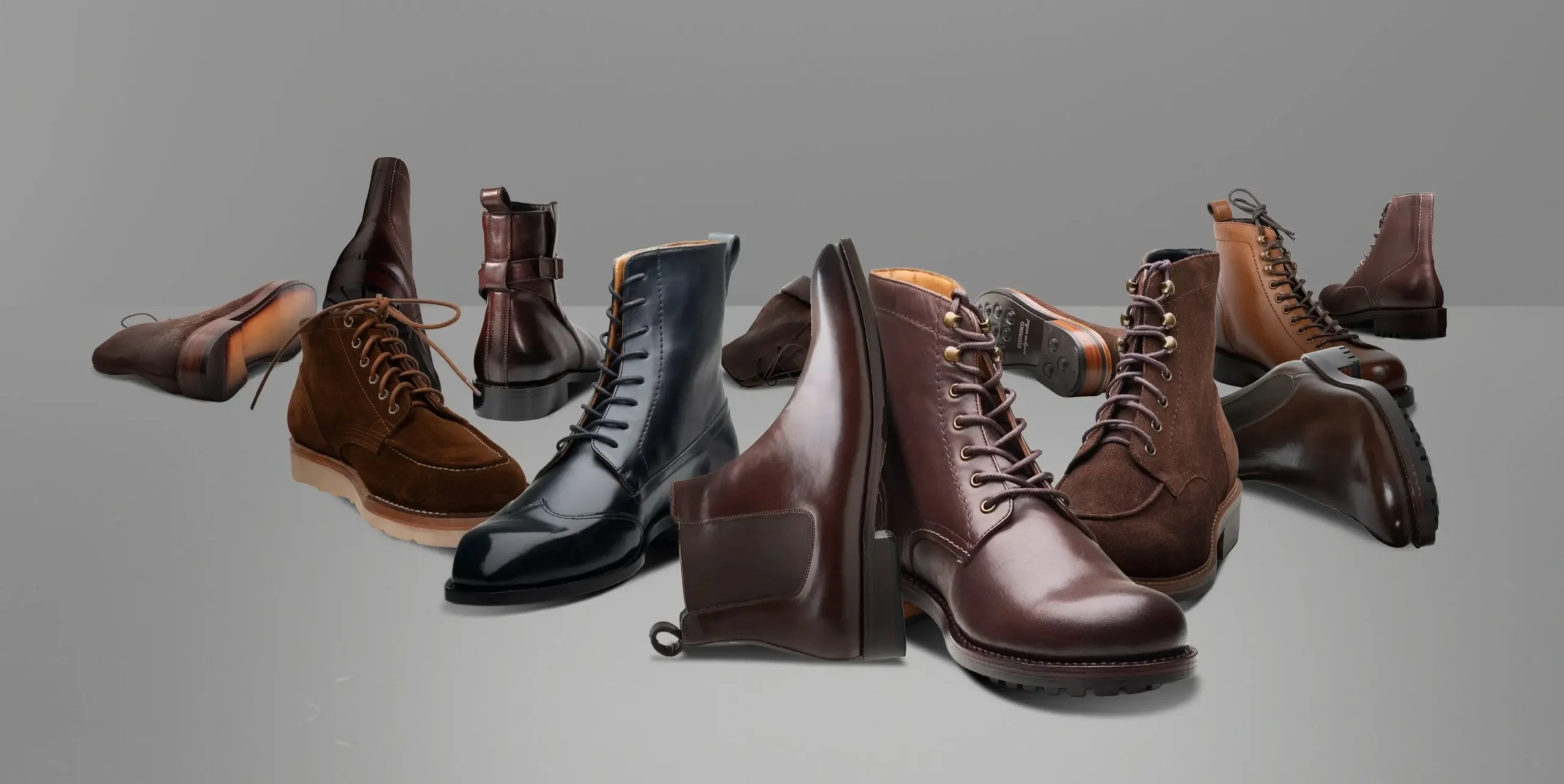
Kozasko is the middle child—arguably the most socially acceptable one—among the Indian welted bootmakers, less pricy and nuanced than the posh and recently price-lifted Bridlen range, but chic and more structured than the diminutive Pelle Santinos.
I have had three pairs of boots from Kozasko—a plain-toe derby boot in pull-up leather, a Roughout suede Chukka, and a Chelsea.
They are not making boots delicately skinned or finessed over a dressier framework. The construction, materials, and last dimensions are designed to uphold the reputation of boots’ functional roots.
The kind that encourages you to exploit the pair that, at first, might have appealed on price. They have a litany of flaws—the leather sags and quickly develops creasing. The construction is not much refined either. Not a sleek profile.
The question is: do you actually want any of them for your functional boots? They may not be the last word in sophistication, but the criticism of their material and refinement is churlish when they actually feel integral to a boot’s practical ability.
Because they are so clear about what they are for and how they should be used, Kozasko floats sensibly above a bank of pioneering Bridlens and BLKBRDs.
How are they made?
In terms of material, construction, and design.
I bought the plain-toe derby boot in January last year and got the other two—Chukka and Chelsea—two months after. They proved fantastically useful despite lacking nerve-racking specifications.
In fact, I should say these boots proved useful because there’s barely anything nerve-racking in them. In case you’re thinking I am underwhelmed by these boots, you couldn’t be more wrong.
They are a significant step up from many bootmakers in terms of material and make. It’s just the minor infraction of benchmarking them against the best of BLKBRD and Bridlen that, in reality, are too posh (and costly) for many to use.
The Material
Delightfully utilitarian and durable leathers, mostly from native tanneries.
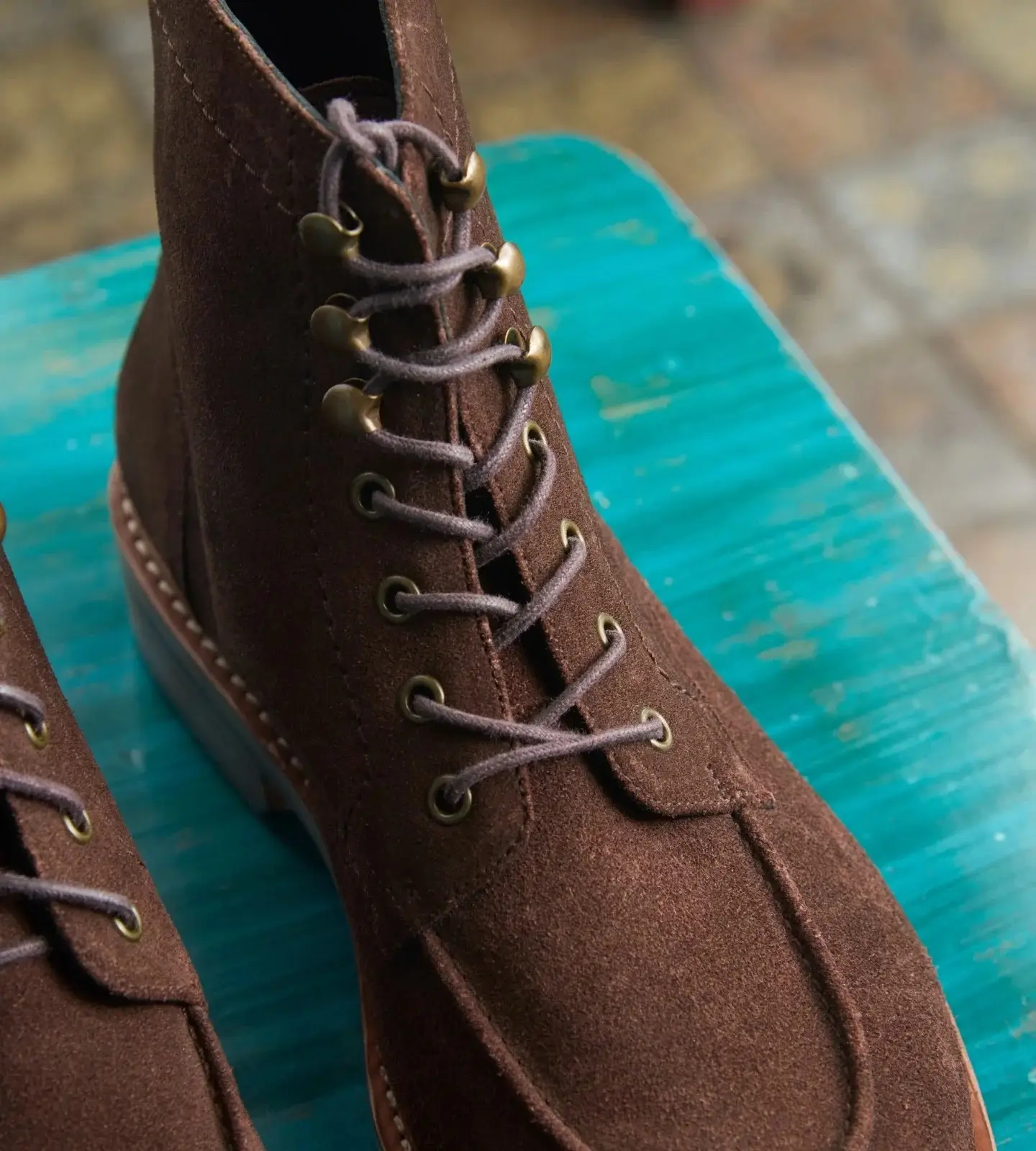
Leather is a vast, manipulative, and equally misunderstood theme. Like those labeled, ❝Genuine leather❞ capitalizes on consumer ignorance.
The romanticized ones are Box calf, Shell cordovan, Pit tanned, and a complex-sounding Italian tannery, as they are featured in sartorial forums and articles.
They are quality materials. But it would be far too harsh and brutal to be taken seriously as a constituent of boot. Not that such materials do not make good boots. They do.
However, boots in our country are supposed to be for the outdoors type, those who spend their days in Gore-Tex and only ever sip tea out of flasks. For most, boots are a tool, not something to pose on campus or in the countryside.
The leather making uppers of my three Kozasko boots deify the rough ‘n’ ready brief of the boot’s DNA. The plain-toe derby boot’s pull-up leather, for instance, is immensely reassuring while characterful looking.
When pushed, the oil displacement or lighting effect is not as pronounced as, say, on the Chromexcel. The creasing is also not as soft. But that’s okay! As they are half the money.
Treat them with any greasy leather cream and they’ll last while developing patina. However, it’s their Roughout suede that takes my soul. I’ve bought those plain-toe derby boots, but to give me an idea of what Kozasko is in for, they sent me a Chukka in Roughout Suede last year.
I’ve found myself reaching for it every chance I get. Unlike split suede, Rough-out is flipped over full-grain leather, exposing corium on the boot and the grain side facing inwards.
Treating the exposed corium with oils and waxes translates into a material that, according to a renowned English maker, Crockett & Jones,❝is one of the most practical materials a man could wish to include in his footwear collection.❞
Much stronger than split suede and water resistant than the Grain side. However, its fairly static appearance is what makes rought-out suede unique. This look prevails as it doesn’t show scratches and wear as easily as smooth leather.
The Crust leather, making the upper of the Chelsea boots, is off-putting, though. It’s partly the material (too delicate for a boot) and partly the quality, which, I think, doesn’t stand out as much as the parallels from other makers at similar prices.
The fact that Chelsea boots have no seams on the side is part of their lore. The reason high-end boots have seams is that they’re using smaller skins – it’s much easier not to have seams when you’re working with a yearling animal or older.
Older animal skin making such a whole-cut design evinces the sag and creasing. Plus, it did not go through the deep dying process. Thus, the finish or top coat is easily affected by moisture, making this leather unsuitable for boots.
The Lining
Nothing significantly special or different.
Simple Drum dyed leather with foam padding.
Maybe not the best (softest) lining materials—a title that for a long time was held by my Bridlen boots.
As the dyes stiffen the leather, many bootmakers prefer such drum-dyed leather for lining as it adds structure and support to the shape of the boot.
This particular leather is vegetable-tanned (tanned using natural tannins), thus durable and promoting breathability.
However, the upper’s breathability is not completely defined by what it’s made of, but by how it’s attached. More on that later.
It is comfortable. But does not mould as well as the crust leather lining, which is yet unattainable in this price range.
The Sole
The Nitrile rubber gives freedom,
and the Argentine leather sole adds unwanted charm.
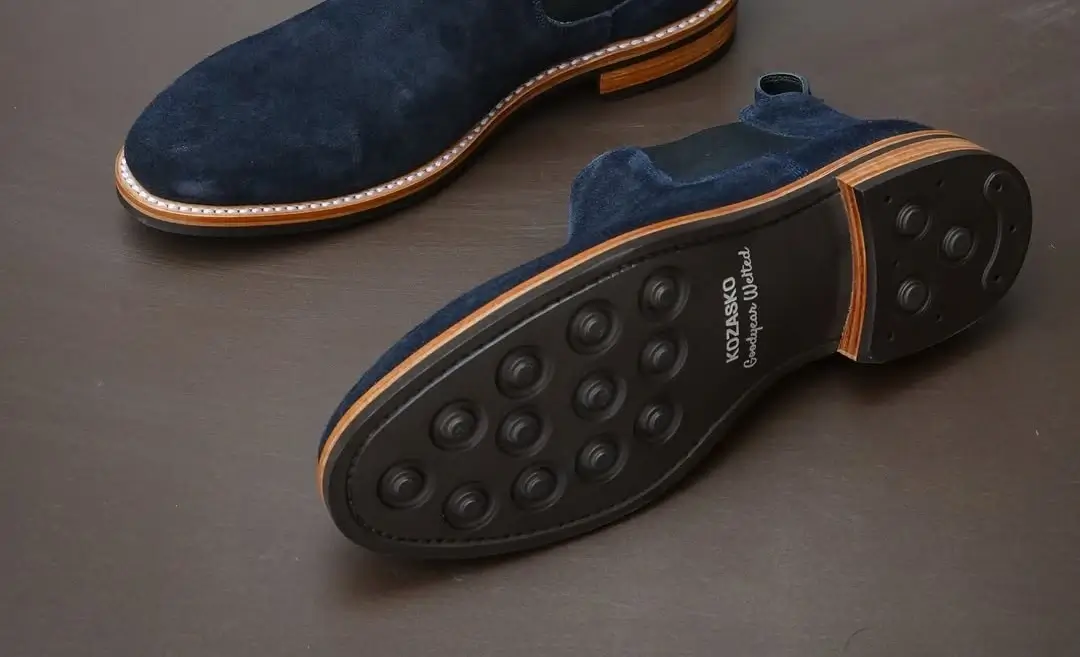
I value the fact that the sole materials have better utilitarian qualities, especially the Nitrile rubber sole on the plain-toe derby boot and the Chelsea.
Nitrile is a synthetic rubber compound that, compared to natural rubber like crepe, is more resistant to oil, acids, and heat. More durable, too, but less flexible and loses all its perks under extreme cold temperatures as the rubber hardens.
The rubber sole of the Chelsea boot features the characteristic studs. It is a great alternative to leather (which is available as an option), as it offers a similar sleek profile without the need to worry about getting it wet and cracking or falling apart like leather.
The Nitrile rubber takes on the plain-toe derby boot in a commando tune. The lug pattern ends a bit in from the edges—along with granting space to do the outsole stitch, this keeps the boot from looking too rough.
Nitrile is a synthetic compound, so don’t expect it to evolve or get softer with wear. It creates a solid foundation, but its stiffness can be felt even through the ample cork filling and a layer of leather midsole.
However, their Argentine leather sole has that delicacy and grace. This is not my first encounter. I’ve had shoes and boots with such leather soles before, and this sole material is somewhat a basis for a maker who desires to add something foreign to the spec sheet.
I’ve always waxed poetic about such quality leather soles in a dress shoe context. The benefits it has over the rubber sole do not stack up in terms of utility, but in comfort.
These leather soles will last if looked after (and used) the way they should. But it’s hard to overlook the fact that there are boots with veg-tanned leather soles at similar prices. Unfortunately, they do the Rough-out Chukka boot just in leather soles.
The Construction
One can’t make better-looking boots that are set out to be (ab)used.
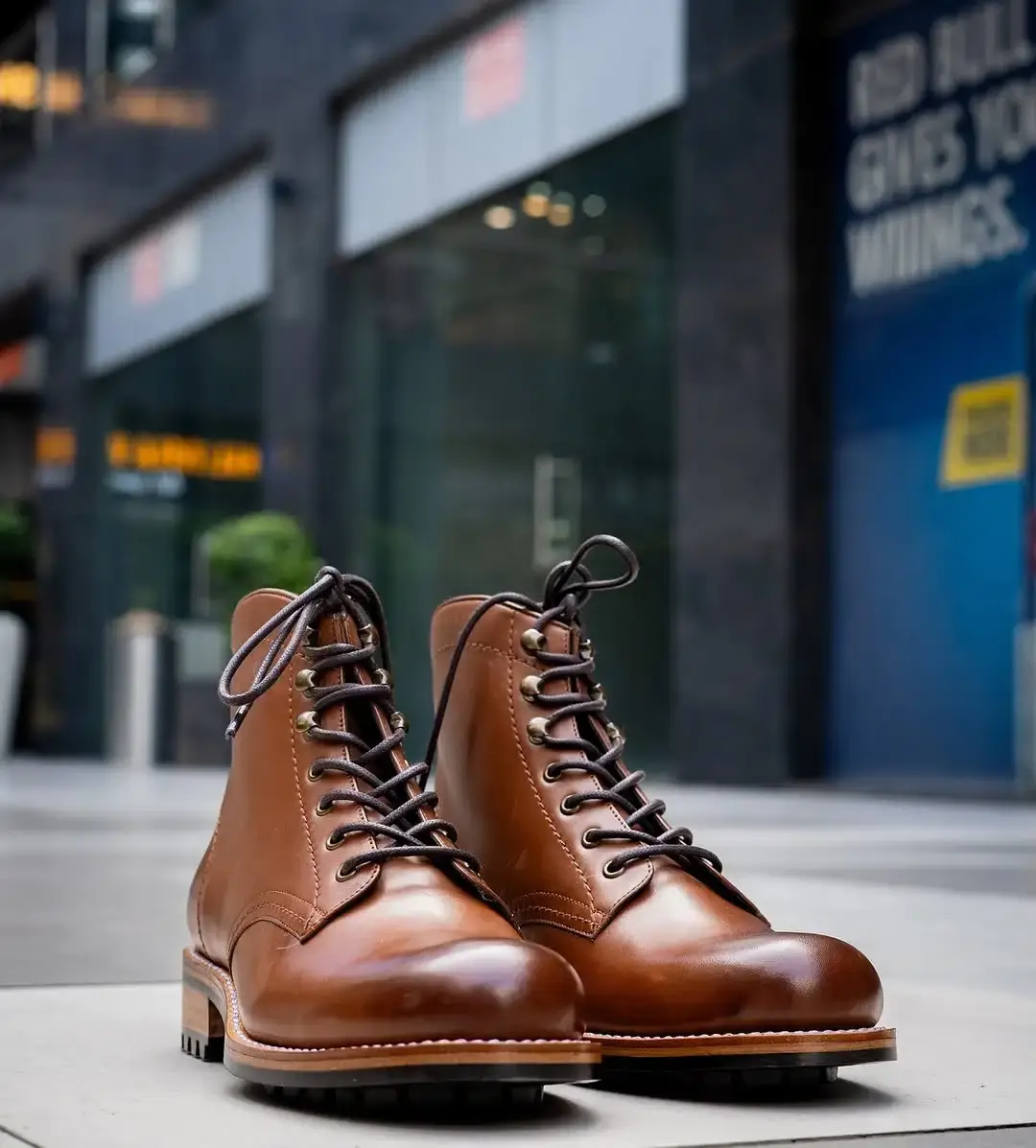
Exploring the recent influx of brands offering welted boots and shoes in India, you’d notice two major groupings. First comprises suppliers becoming brands.
In other words, a few makers who have taken the plunge of having their own label while courting their decade-old international clientele.
Second is a batch of names created remotely with a computer by some smart technocrat with no hands in production.
Kozasko is a hybrid. Rather than buying boots from small, family-run makers and slapping their label on them, Kozasko is underpinned by a pool of skilled native (Agra) bootmakers.
Unlike the first group, they don’t have the volume of work to justify a machine-filled factory setting. The making of Kozasko boots is a lot of handwork in the name of small-scale compromises. Many Bespoke grade details (that can only be achieved by hand) come as standard.
The Uppers
No sophistications. The unpretentiousness
makes them very boot-like and easy to read.
My Bridlens and BLKBRDs are soaking in a celebrity life. I was submitted to their (unnecessary) gratuitous complexities that, for a while, the real metaphor of a boot was faded into the background.
In a style that is a tool at the outset, I was searching for the waist that disappears under the foot, stitching that is carebara tiny, instagrammable proportions, and a katana-sharp feather edge.
I have to cleanse the palate as Kozasko isn’t one of those. Their uppers are made for what a typical boot is set out to do, and do it with a dose of classic British idiosyncrasy.
The pattern pieces for the uppers are hand-clicked, enabling a skilled clicker to cut from the optimal (blemish-free) part of the hide. The raw edges are stained well enough to soothe-out the slightly aggressive proportions of the boot.
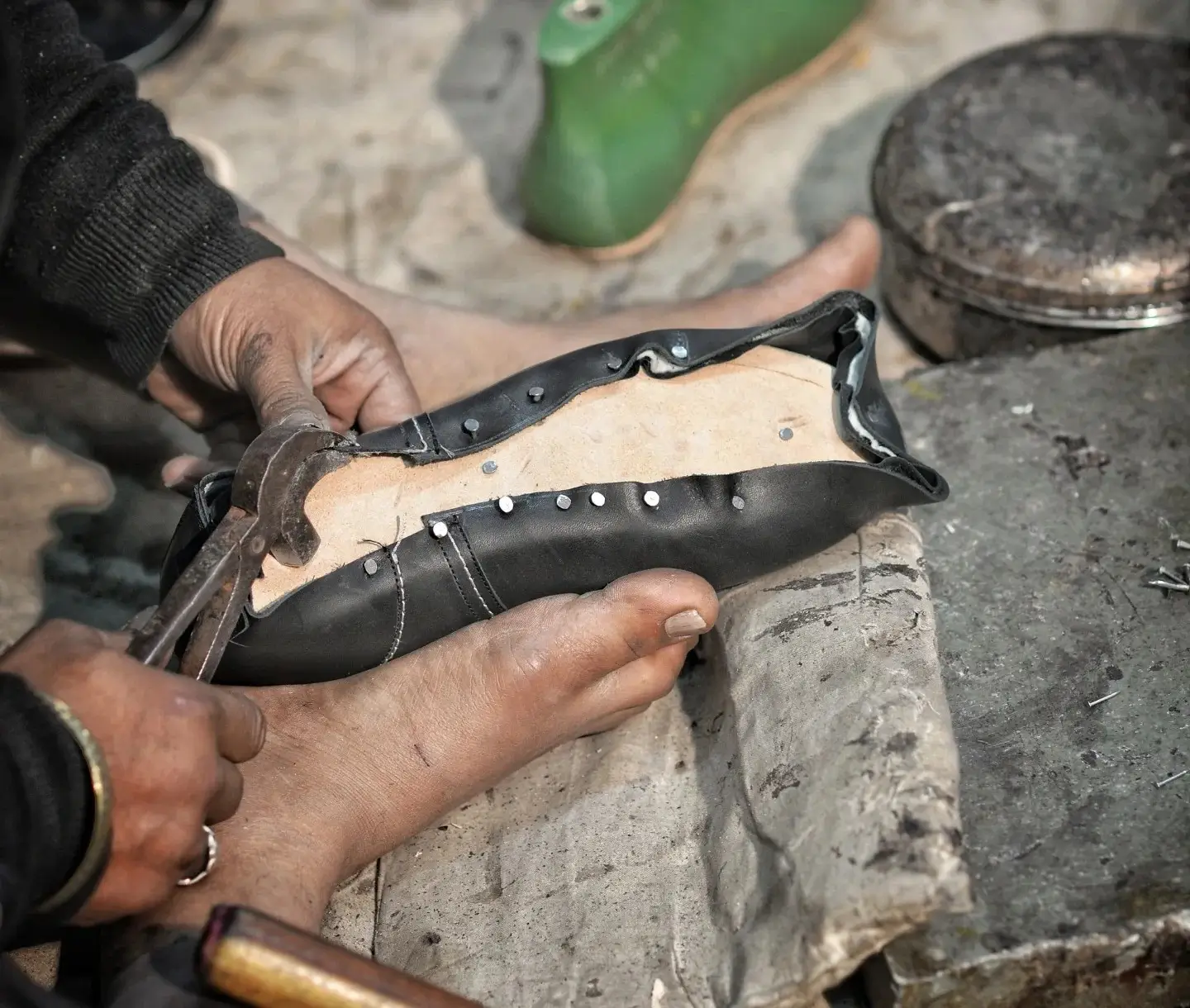
The uppers are machine-stitched at three (give or take) stitches per inch. Considering the relatively lower tensile strength of chrome-tanned leather, stitching at a higher density may compromise strength.
The full leather lining is fused (glued) to the upper with fabric backing in between for structure. The floating ones (where just the edges are sewn, with no glue in use) result in better breathability and comfort, whereas the fused ones mould better.
I love their idea of proportion and design. They are neither playing it too safe nor trying to be too brave. The aggressive proportions introduce a boot’s typical and authentic personality.
The unclustered design and neat construction ensure the pairs possess the classic elegance one might expect at this price point. Kozasko’s design philosophy is challenging my long-held faith in high-stitch density and last definition for producing prepossessing boots.
Doing business on a ready-to-ship model involves the pressure of managing returns. A coercion that mandates the makers to carve a conservative and safe last that can accommodate a legion of foot shapes between sizes.
The boots don’t have a lot of curves and angles, despite being hand-lasted. This mien stacks up and overdraws on those wholecut Chelsea boots. That’s a totally aesthetic detail that many might admire if they were exposed to it.
The Bottoms
The ample handwork shows a very compact and responsive sole unit.
How the sole is assembled and the way it takes the upper are grading standards in the shoe and boot pantheon. Any form of welted construction is regarded as the finest, while glued constructions are deemed the least favorable.
In the absence of any regulatory body, with time, the original welting methods, one that has built such a renowned reputation, were amended to economically achieve volumes at the cost of quality.
The differences are so subtle that critics these days don’t shy away from cutting expensive boots into pieces to check authenticity.
Kozasko is not a ❝supplier becoming a brand.❞ They don’t need the volumes. The old traditional hand-welting suits their trade scale and size.
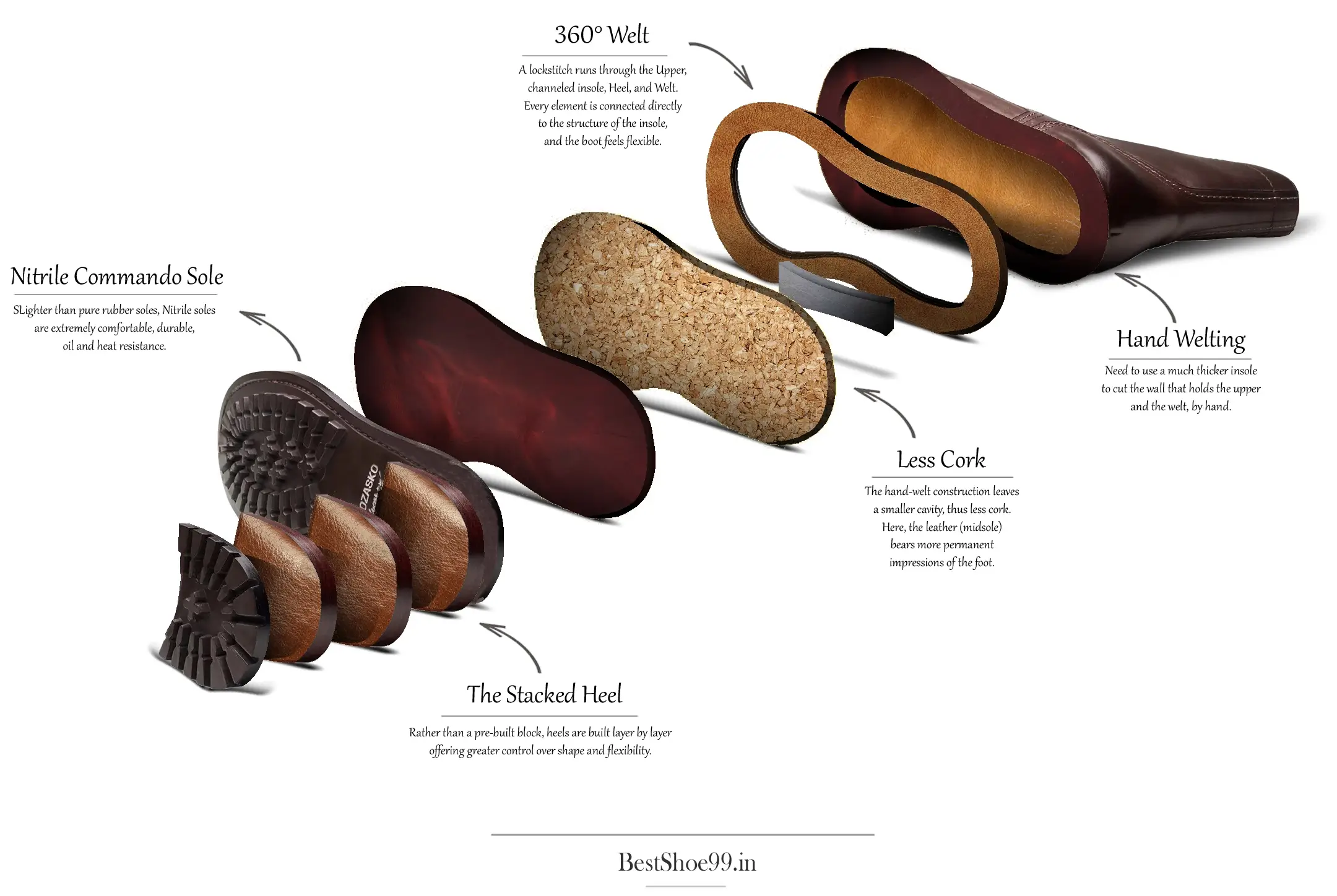
The channel, to which the welt is stitched, is carved from a thicker leather insole. It’s an expensive alternative to the modern practice of gluing a linen rib on a thinner insole.
Claims have stated that after 3 to 4 resoles, the gemming will break (either the rib or the cement (shoe glue) will come loose) and then make the shoe un-resoleable.
Stitching the welt directly to the insole allows the welt to sit flatter on the shoe, so there is less cavity to fill with cork between the insole and the outsole.
This makes a compact sole unit that beds evenly, and it’s noticeable when everything is connected directly to the structure of the boot. The enhanced flexibility is the most evident difference, followed by better responsiveness and ground feel.
Kozasko uses cork boards rather than Granulated cork paste. It’s just the risk of an uneven spread associated with the paste; otherwise, there’s not much difference.
All three boots have a square waist, and, for a boot, it has two advantages. First, the better stability and structure compared to a beveled waist. Second, the welt thickness is not compromised while developing a square waist.
Instead of using a pre-made heel block, these boots have stacked (three-layer) leather heels. Pitiched heels give the makers better control over the heel shape, uniform finish, and even wear.
The lower tensile strength sole leather might not withstand a very high stitch density. The sole might look more elegant if trimmed a little closer to the upper. Well, it’s a job for not just a skilled hand but a brave heart.
How’s the fit?
Individuals with narrow feet might face width issues.

The irony with comparing boots is that most of the time, the fineness of the make or material doesn’t really matter. The only thing the customers of a boot care about is whether they’re comfortable to wear all day, and last a really long time.
The former is remarkably, and the latter marginally, subject to how well a boot fits. A bootmaker has to fit the boot as well as the mind because everyone has a suspicion about what makes a great fit.
Rather than providing a generalized report, I’d like to share my personal experiences with these three boots. I’ve had these for over a year now, and they’ve had enough wear to tell the differences between the fit before breaking them in and the fit after, and what changes one can expect with wear.
Before exploring the three fits with a bit more nuance, one consistency I can draw from them is the width. Having a ready-to-wear line of boots, Kozasko tends towards the ample, and individuals with fairly narrow joints might struggle to fill up the volume of the boot.
A tight lace pull and this unfilled room crumpled up, especially in the area where quarters and vamps meet. It leaves a very odd crease on the derby boot and chukka boot.
All these boots were a UK size 8, which is pretty much my regular boot size. The width goes up with the boot size. For that reason, downsizing might bleed into a very tight fit rather than a better one.
I thought the thick socks might fill up the gap between the facings on either side. However, the stiff fabric backing that Kozasko uses doesn’t have much give in the heel.
Other than that, everything fits perfectly under the Chukka and Derby boots. There’s enough room to wiggle my toes around, and the heel is held firmly in place. Let the Chukka’s leather sole soften up a little before deciding on heel-slippage.
Their Chelsea boots, or the Chelsea style in general, have the greatest fit potential after loafers, and one must manage expectations regarding a Chelsea fit.
Because expecting the perfect fit from a lace-less style that’s almost carved around the foot would be futile unless it’s your third bespoke commission from the same maker.
I’m okay if my heels are snugly held, and fortunately, the pair from Kozasko does that nicely, thanks to the suede piece inside.
The opening of the boot has enough stretch for an easy slip-in. The little room in the opening is often seen as a fitting issue, as many people expect a snug hold around the ankle as well.
In fact, some space around the ankle is a good sign in a boot or high-cut style of footwear, because it enables free movement as the ankle oscillates back and forth while walking.
The inside is not very soft, an extravagance that comes standard with boots having high-quality calf leather lining. However, the foam padding isn’t bad at all. It delivers with barely any breaking-in.
Its whole-cut style didn’t contribute to the fitting of the boot because the side seams create irritation only when the boot is too tight.
The flexibility and responsiveness are very impressive, as every element of the bottom is connected directly to the structure of the boot. Thanks to the compact construction, none of the three boots produces that sinking sensation.
The foot sits on a sturdy leather midsole after a month of wear and produces static impressions, giving a custom-footbed treatment.
Those familiar with boots featuring a tight waist might urge the lack of arch support, because the balance that a square waist produces often goes unnoticed.
Overall, many wouldn’t find any hotspots in their boots, largely because Kozasko is cleverly following the same old-but-working recipe of off-the-shelf boots in which many won’t notice if it’s too big, but certainly will if it’s too small.
How long they’ll last?
What level of damage does the two-year warranty cover?

Over the years, I’ve defined boots most often by construction and material. Occasionally by design and, once in a while, by price. But the two-year warranty (and three free refurbishments the following year) that Kozasko implements compelled us to look at their boots by life expectancy.
A quantifiable claim on a matter which is as subjective as it gets, there aren’t that many bootmakers this confident in their product. Brands refrain from claiming longevity or offering warranties since it is essentially a gamble based on how someone is with his boots.
Kozasko draws a line, but that does not mean their boots couldn’t overlast or underlast the two-year warranty limit. Keep them without shoe tree or leather cream, wear them in the rain, and soak the sole—that simulates a use that has you needing to replace it within weeks.
Though I wouldn’t back such brutal behavior, Kozasko’s warranty does. For two years‚ ❝If we can’t repair,❞ Kozasko rep said‚ ❝we will make a new pair and provide complimentary refinishing three times the following year.❞
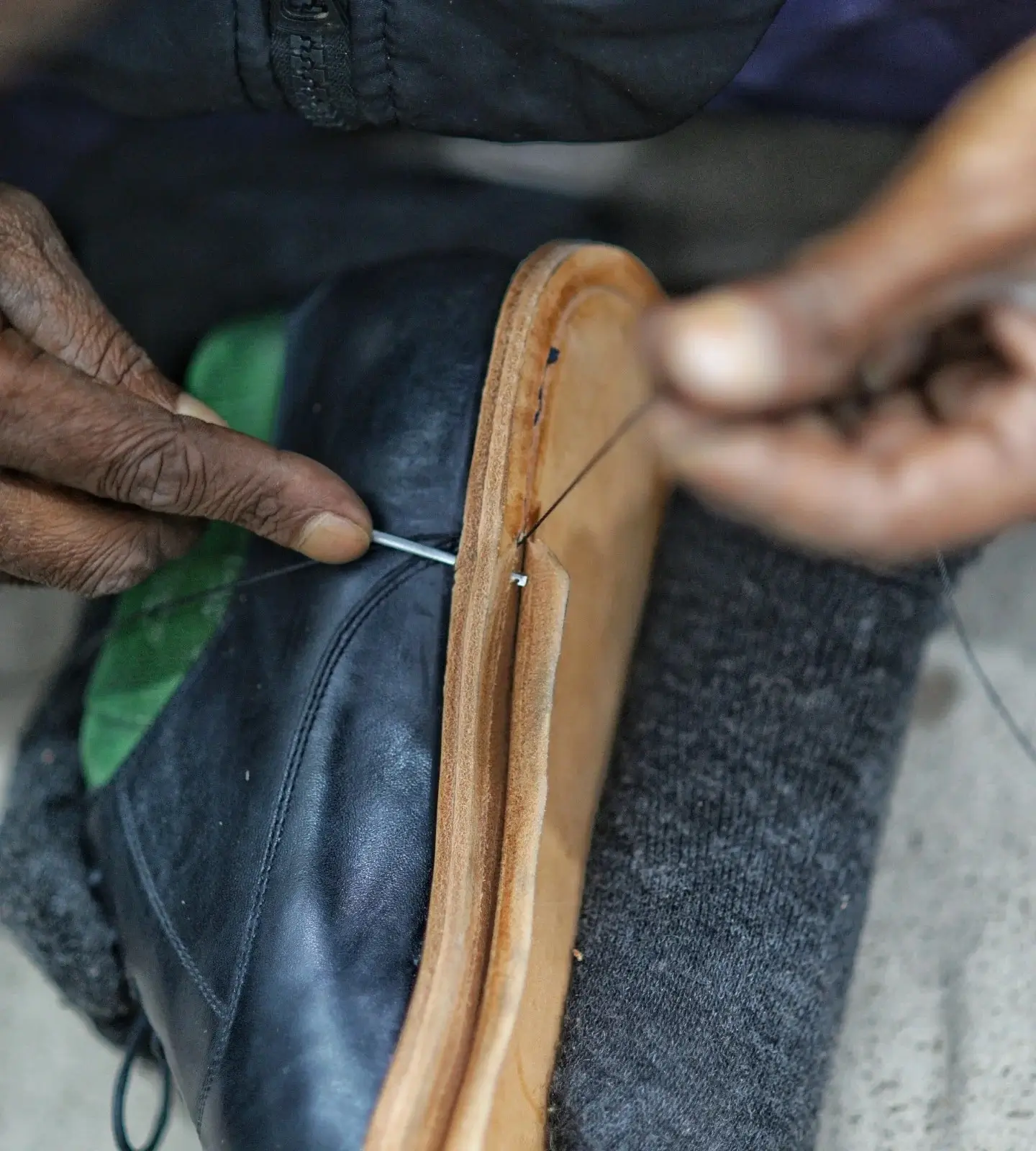
Business-wise, this might sound like the least ambitious path, but it’s the most demanding one of all, requiring strong boots and a strong set of beliefs.
For us customers, such service from a bootmaker is exceptional enough to redefine the rather trivial concept of ❝customer service❞ by propelling it to a level that I, for one, have never experienced elsewhere, even for much more expensive purchases.
Apart from the tangibles, such numbered assurance lends a fresh perspective to the boots and the makers. It becomes easier to trust what’s claimed about the quality of their boots.
It eases concerns regarding the pair’s longevity because two years are enough to uncover flaws in the leather, loose threads to disengage, and to rip the soft lining to pieces.
Using plastic shoe trees to avoid nose-lifts, with an investment of one polishing and feeding cream twice a month, the three pairs of Kozasko don’t look new, and certainly show their age.
The plain-toe derby boot, however, is the most worn. The uppers are crowded with creases and sag, hinting at their journey over the past 18 months.
The lugs are reduced to an almost flat patch mainly in the middle. No moisture-born issues as all three pairs are mostly worn in the bone-dry marble mines here in Rajasthan.
Still, none of the three pairs had enough wear to need resoling. But for the sake of exploring how good their refurbishment service is, I’d very soon send the Chukka (their leather sole are wearing thin) back to them and will update this article with the insights.
Any Rivals Worth Our Time?
One could look at the usual suspects like Craft&Glory and BLKBRD,
or perhaps try Bridlen if posh is your type.
There are a few to talk about here, but don’t expect that any of them would fade Kozasko into the background. Kozasko sits at the apex after which diminishing marginal utility begins.
Even the slightest upgrade (mainly aesthetic) requires hefty premiums. Downshifting would first take away the warranty, followed by finishing, and significant quality dilution from where the five-figure boot range begins.
There’s nothing akin to the Kozasko that really counts as a direct competition in India. Because the Welted boots market is still new and kind of cluster-free.
The Welted bootmakers mentioned below do not bump into each other (and Kozasko) in terms of price, quality, intent, style, and target audience. Have a read of each maker’s summary, then use the links to find the articles with more details.
Craft & Glory
Aggressively styled, similar price, roughly made
with materials not on par with Kozasko.

ITake them as a more boot-i-fied cousin of Kozasko. The Goodyer welt construction, thicker Full-grain buffalo leather uppers, and heavy commando soles would take years of brutal use before wearing to death.
I have two pairs from Craft & Glory—6″ Ranger and Moc—and have covered them in an article. They are rough and heavy in construction. This means they are comfortable slightly slowly in the morning, but it gets better with the day.
A noticeable compromise with flexibility is the downside of such raw construction. The buffalo leather is tough wearing, but does not age beautifully.
The fuller last shape (especially the toe box) and slightly aggressive proportions eradicate any remaining odds of initiating a smart metaphor. In the price range of ₹10k to ₹30k, Craft & Glory boots are as functional as they get.
In fact, ❝the raw and rough❞ is the style of this brand, and they take great pride in reflecting it in their entire range. Tap on these blue words to know more about my experience with Craft & Glory Boots.
BLKBRD
Ardently covers the whole breed of boots in three attempts.
It’s on how well you choose.
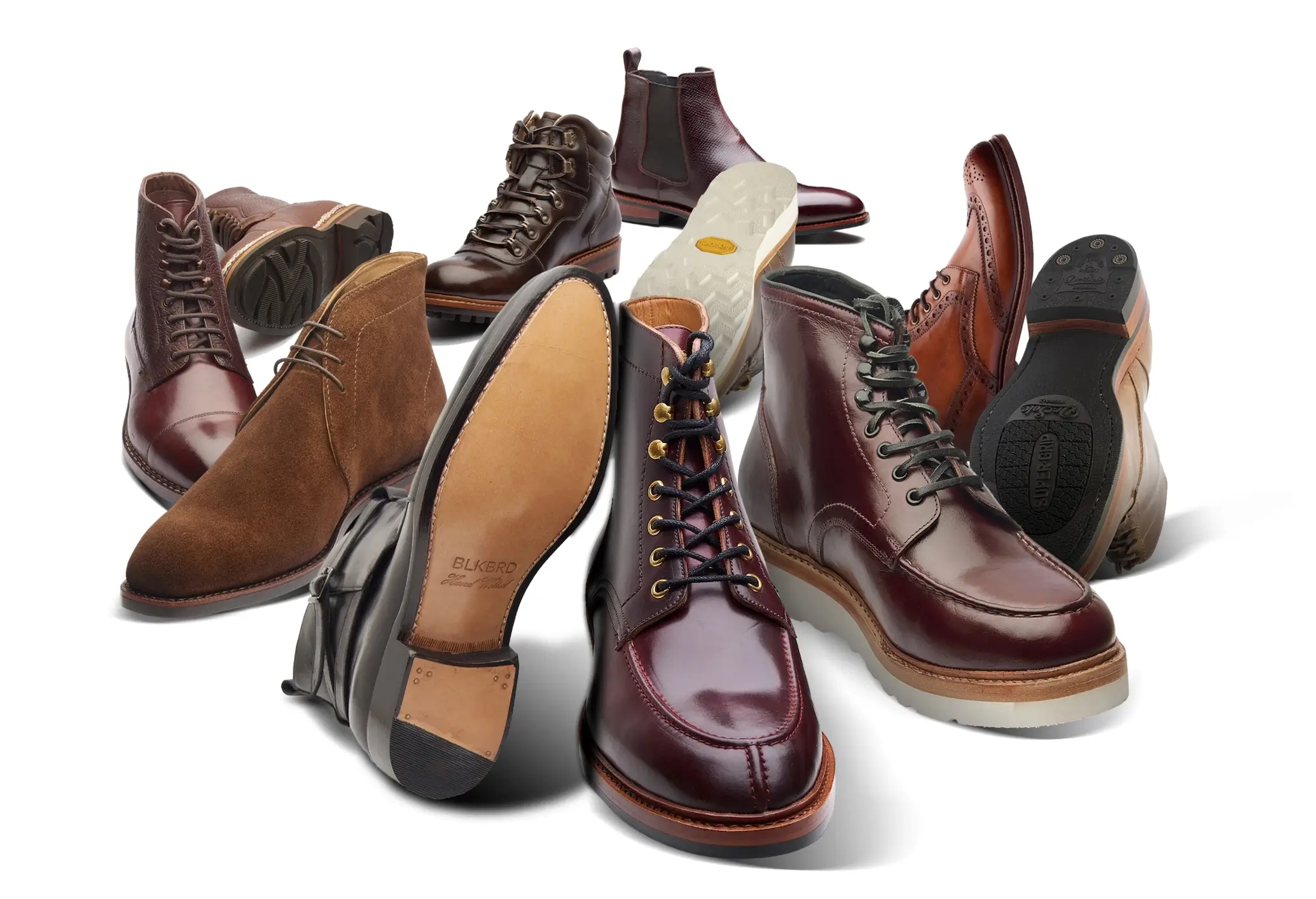
My worst and best boot purchase is BLKBRD, and I’ve been guilty of this myself. That exposure helped me to thread the nature of BLKBRD’s vast boot offering. An offering that needs serious consideration as well as a fair bit of knowledge.
From native tanneries’ buffalo leather to Shell Cordovan from renowned Horween, simple single leather sole to Vibram cleated rubber sole, in simple stitchdown to veldtschoen construction, from hiking to balmoral style, they offer a full selection.
Try to be very specific about your needs, and it will pay off. Surprisingly, this immensity does not dilute quality. They are on par with (if not, better than) those down to that particular category of boot.
Prices kick off at ₹13k, but if you crave something posh, then things can reach up to ₹63k. Tap on these blue words for a full BLKBRD boots review.
Bridlen
The refinements would keep one from putting
their boots’ unmatched capabilities to the test.

❝Their mainline’s Oxford on a steroid,❞ Rajat, my colleague, quips when he first sees the Bridlen Balmoral boot. The uppers are made of the best skins from the leather stock utilized in creating footwear for other brands.
The welts are sewn to the insole, the waist is tight, the shape is sleek, the stitching is very dense, and the fitting process is very involved. The boots are made within six weeks of placing the order.
Priced at ₹29k, most of the Bridlen models are posh artifacts for whom it is too harsh and brutal to be taken seriously for everyday haul.
Have been using four pairs of Bridlen boots for two years, and I learned that boots from other makers do a job, and do it well—for much less money than Bridlen—except saying something about the wearer or presenting a certain image to their spectators.
What’s the verdict?
There are better bootmakers. But away from Kozasko, you’d only do worse in this price range.
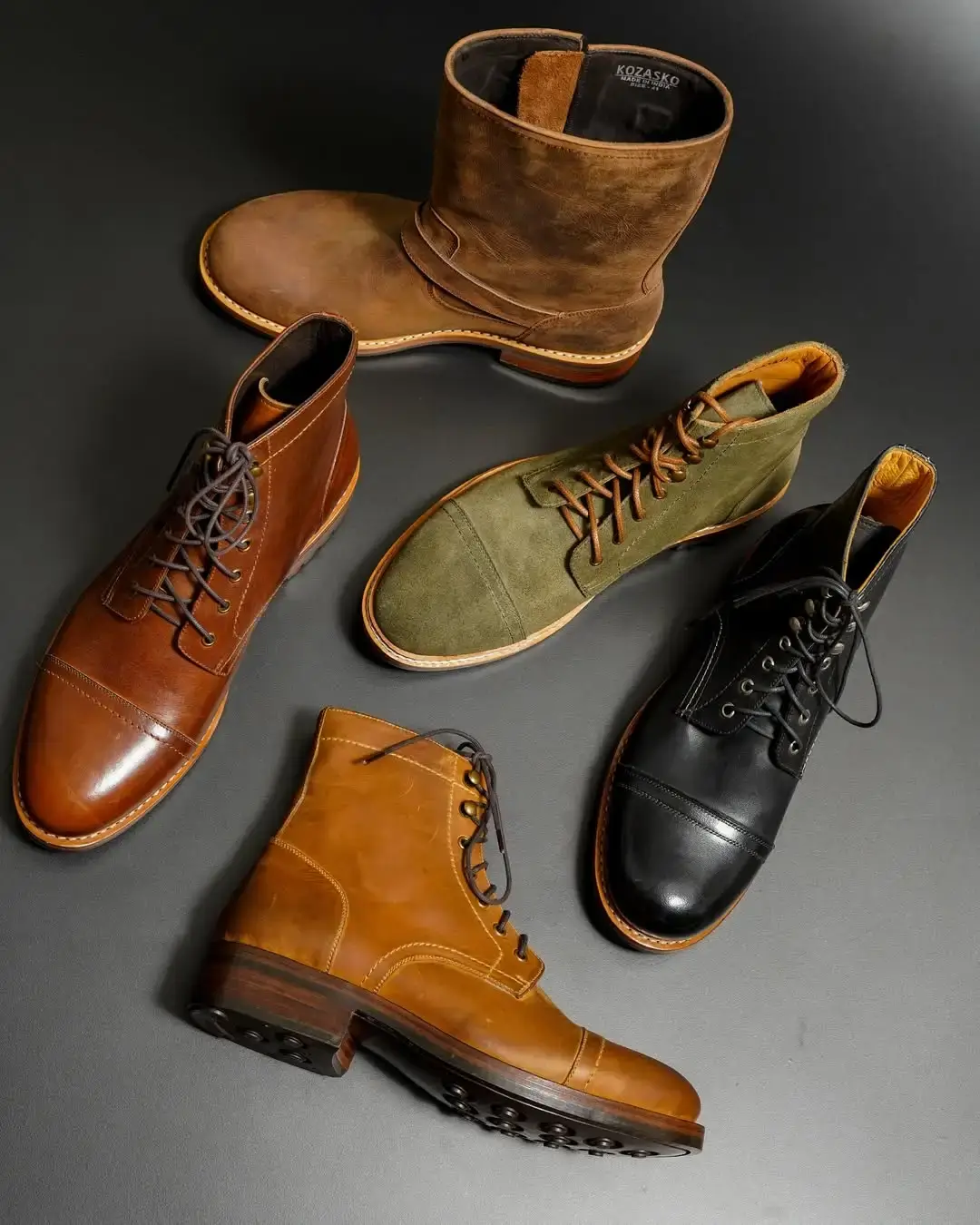
Decent-looking but robust leather, hand-welted compact construction, and the customer service offer plenty of promise. I’m not claiming that you can’t get better than Kozasko. In fact, their Chelsea boots are very off-putting.
Not because of the fitting issues. Many wouldn’t publicly talk about the really ill-fitting Chelsea they’ve had from big names. Yet it’s the aesthetics most people focus on, and the Kozasko Chelsea I have does not age aesthetically.
However, apart from Chelsea, most boot styles thrive on such a purposeful approach. Kozasko do boots with rugged capabilities, cleaner lines without extra flair. Pair that with a price range of ₹12k to ₹27.5k, and Kozasko feels more like a boot scene winner than a fighter.
You Might Also Like
How can we improve BestShoe99? Got feedback?


